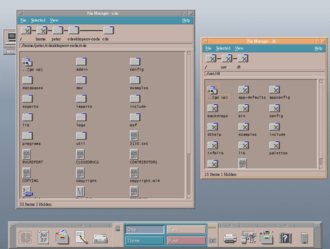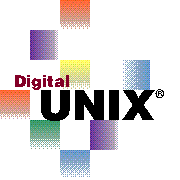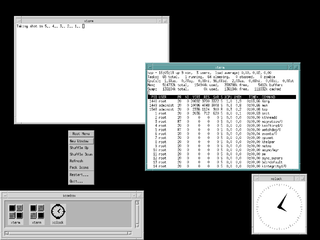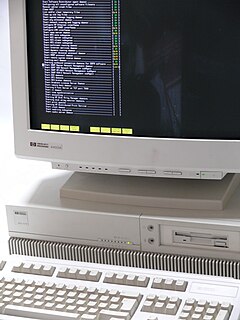
The Common Open Software Environment (COSE) was an initiative formed in March 1993 by the major Unix vendors of the time to create open, unified operating system (OS) standards. [1]

The Common Open Software Environment (COSE) was an initiative formed in March 1993 by the major Unix vendors of the time to create open, unified operating system (OS) standards. [1]
The COSE process was established during a time when the "Unix wars" had become an impediment to the growth of Unix. Microsoft, already dominant on the corporate desktop, was beginning to make a bid for two Unix strongholds: technical workstations and the enterprise data center. In addition, Novell was seeing its NetWare installed base steadily eroding in favor of Microsoft-based networks; as part of a multi-faceted approach to battling Microsoft, they had turned to Unix as a weapon[ fact or opinion? (See discussion.)], having recently formed a Unix-related partnership with AT&T known as Univel.
Unlike other Unix unification efforts that preceded it, COSE was notable in two ways: it was not formed in opposition to another set of Unix vendors, and it was more oriented toward making standards of existing technologies than creating new offerings from scratch.
The initial members, (known as "The Big Six" or "SUUSHI"), were:
These represented the significant Unix system and OS vendors of the time, as well as the holders of the Unix brand and AT&T-derived source code. They also represented almost all the key players in the two major Unix factions of the late 1980s and early 1990s, the OSF and Unix International (UI). Notable in its absence was OSF co-founder Digital Equipment Corporation; Digital did finally announce its endorsement of the COSE process the following June. [2]
COSE's announced areas of focus were: a common desktop environment; networking; graphics; multimedia; object-based technology; and, systems management. On September 1, 1993 it was also announced that the COSE vendors were developing a unified Unix specification with the support of over 75 companies. [3]
Unlike OSF or UI, the COSE initiative was not tasked to create or promote a single operating system. Their approach was to instead survey and document the OS interfaces already in use by Unix software vendors of the time. This resulting list, originally known as "Spec 1170", evolved to become what is now known as the Single Unix Specification. [4]
Spec 1170 (no relation to the SPEC benchmarking organization) was named after the results of the first COSE effort to determine which Unix interfaces were actually in use; inspection of a large sample of current Unix applications uncovered 1,170 such system and library calls. As might be expected, the actual number of interfaces cataloged continued to grow over time.
Management of the specification was given to X/Open. In October 1993, it was announced that the UNIX trademark, which was at that time owned by Novell, would be transferred to X/Open. [5] These developments meant that the UNIX brand was no longer tied to one source code implementation; any company could now create an OS version compliant with the UNIX specification, which would then be eligible for the UNIX brand.
Besides the opening and standardization of the UNIX brand, the most notable product of the COSE initiative was the Common Desktop Environment, or CDE. CDE was an X11-based user environment jointly developed by HP, IBM, and Sun, with an interface and productivity tools based on OSF's Motif graphical widget toolkit. [6]
Although in the areas of desktop and the OS itself the COSE process was one of unification, in other announced areas, it was decided to endorse existing technologies from both camps rather than pick one. For example, the announced direction for networking was for all participants to sell, deliver and support OSF's DCE, UI's ONC+, and a NetWare client.
Other areas were addressed in very broad terms. For object-based technology, CORBA was called out as the underlying technology, but method of implementation was left to the individual companies.
In March 1994 UI and OSF announced their merger into a new organization, which retained the OSF name. [7] The COSE initiative became the basis of the new OSF's "Pre-Structured Technology" (PST) process. [8] These efforts in turn eventually became the responsibility of The Open Group, an entity formed by the merger of the new OSF and X/Open in 1996.
In the end, the most significant product of the COSE process was the creation of a universally-recognized single UNIX standard and an independent organization to administer it. It marked the end of Sun's OPEN LOOK graphical environment in favor of a Motif-based desktop, at the same time making the latter a standard rather than a proprietary toolkit. Although it had less impact on the other standardization areas it originally intended to address, it nonetheless had a major influence on the future of Unix extending far beyond the 12 months of its independent existence.

The Common Desktop Environment (CDE) is a desktop environment for Unix and OpenVMS, based on the Motif widget toolkit. It was part of the UNIX 98 Workstation Product Standard, and was for a long time the Unix desktop associated with commercial Unix workstations.
The Single UNIX Specification (SUS) is the collective name of a family of standards for computer operating systems, compliance with which is required to qualify for using the "UNIX" trademark. The core specifications of the SUS are developed and maintained by the Austin Group, which is a joint working group of IEEE, ISO JTC 1 SC22 and The Open Group. If an operating system is submitted to The Open Group for certification, and passes conformance tests, then it is deemed to be compliant with a UNIX standard such as UNIX 98 or UNIX 03.

Tru64 UNIX is a discontinued 64-bit UNIX operating system for the Alpha instruction set architecture (ISA), currently owned by Hewlett-Packard (HP). Previously, Tru64 UNIX was a product of Compaq, and before that, Digital Equipment Corporation (DEC), where it was known as Digital UNIX.

Solaris is a proprietary Unix operating system originally developed by Sun Microsystems. After the Sun acquisition by Oracle in 2010, it was renamed Oracle Solaris.
Network File System (NFS) is a distributed file system protocol originally developed by Sun Microsystems (Sun) in 1984, allowing a user on a client computer to access files over a computer network much like local storage is accessed. NFS, like many other protocols, builds on the Open Network Computing Remote Procedure Call system. NFS is an open IETF standard defined in a Request for Comments (RFC), allowing anyone to implement the protocol.
The Open Software Foundation (OSF) was a not-for-profit industry consortium for creating an open standard for an implementation of the operating system Unix. It was formed in 1988 and merged with X/Open in 1996, to become The Open Group.

In computing, Motif refers to both a graphical user interface (GUI) specification and the widget toolkit for building applications that follow that specification under the X Window System on Unix and Unix-like operating systems. The Motif look and feel is distinguished by its use of rudimentary square and chiseled three-dimensional effects for its various user interface elements.
OSF/1 is a variant of the Unix operating system developed by the Open Software Foundation during the late 1980s and early 1990s. OSF/1 is one of the first operating systems to have used the Mach kernel developed at Carnegie Mellon University, and is probably best known as the native Unix operating system for DEC Alpha architecture systems.
Presentation Manager (PM) is the graphical user interface (GUI) that IBM and Microsoft introduced in version 1.1 of their operating system OS/2 in late 1988.

OPEN LOOK is a graphical user interface (GUI) specification for UNIX workstations. It was originally defined in the late 1980s by Sun Microsystems and AT&T Corporation.

The Santa Cruz Operation, Inc. was an American software company, based in Santa Cruz, California, that was best known for selling three Unix operating system variants for Intel x86 processors: Xenix, SCO UNIX, and UnixWare.

The Unix wars were struggles between vendors to set a standard for the Unix operating system in the late 1980s and early 1990s.

Unix System V is one of the first commercial versions of the Unix operating system. It was originally developed by AT&T and first released in 1983. Four major versions of System V were released, numbered 1, 2, 3, and 4. System V Release 4 (SVR4) was commercially the most successful version, being the result of an effort, marketed as Unix System Unification, which solicited the collaboration of the major Unix vendors. It was the source of several common commercial Unix features. System V is sometimes abbreviated to SysV.

Visual User Environment is a discontinued desktop environment developed by Hewlett-Packard, intended for use on Unix workstations. VUE is based on the Motif widget toolkit and targets the X Window System.

The history of Unix dates back to the mid-1960s. when the Massachusetts Institute of Technology, AT&T Bell Labs, and General Electric were jointly developing an experimental time-sharing operating system called Multics for the GE-645 mainframe. Multics introduced many innovations, but also had many problems. Bell Labs, frustrated by the size and complexity of Multics but not its aims, slowly pulled out of the project. Their last researchers to leave Multics – among them Ken Thompson, Dennis Ritchie, Doug McIlroy, and Joe Ossanna – decided to redo the work, but on a much smaller scale.
Caldera OpenLinux (COL) is a defunct Linux distribution. Caldera originally introduced it in 1997 based on the German LST Power Linux distribution, and then taken over and further developed by Caldera Systems since 1998. A successor to the Caldera Network Desktop put together by Caldera since 1995, OpenLinux was an early "business-oriented distribution" and foreshadowed the direction of developments that came to most other distributions and the Linux community generally.
Comparison of the Java and .NET platforms.

Unix is a family of multitasking, multiuser computer operating systems that derive from the original AT&T Unix, whose development started in 1969 at the Bell Labs research center by Ken Thompson, Dennis Ritchie, and others.
The Application Programming Interface for Windows (APIW) Standard is a specification of the Microsoft Windows 3.1 API drafted by Willows Software. It is the successor to previously proposed Public Windows Interface standard. It was created in an attempt to establish a vendor-neutral, platform-independent, open standard of the 16-bit Windows API not controlled by Microsoft.